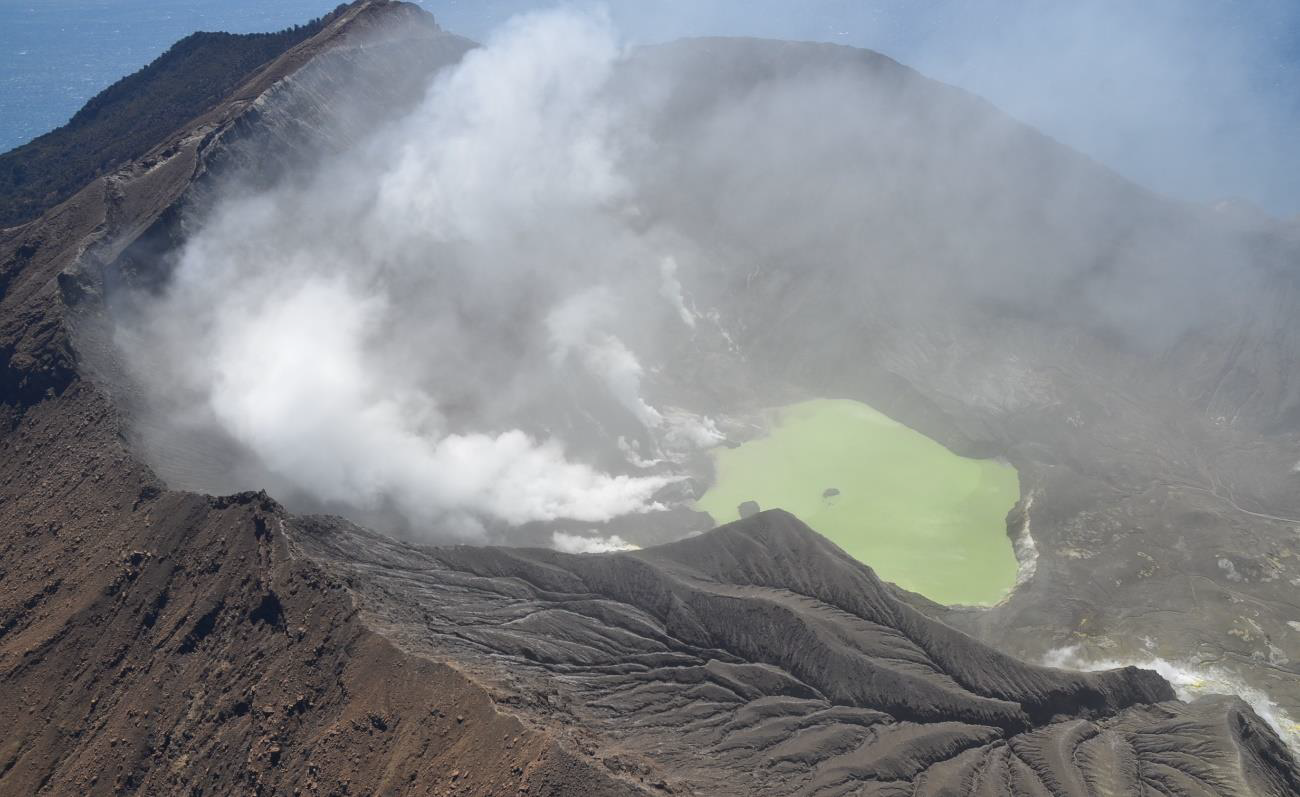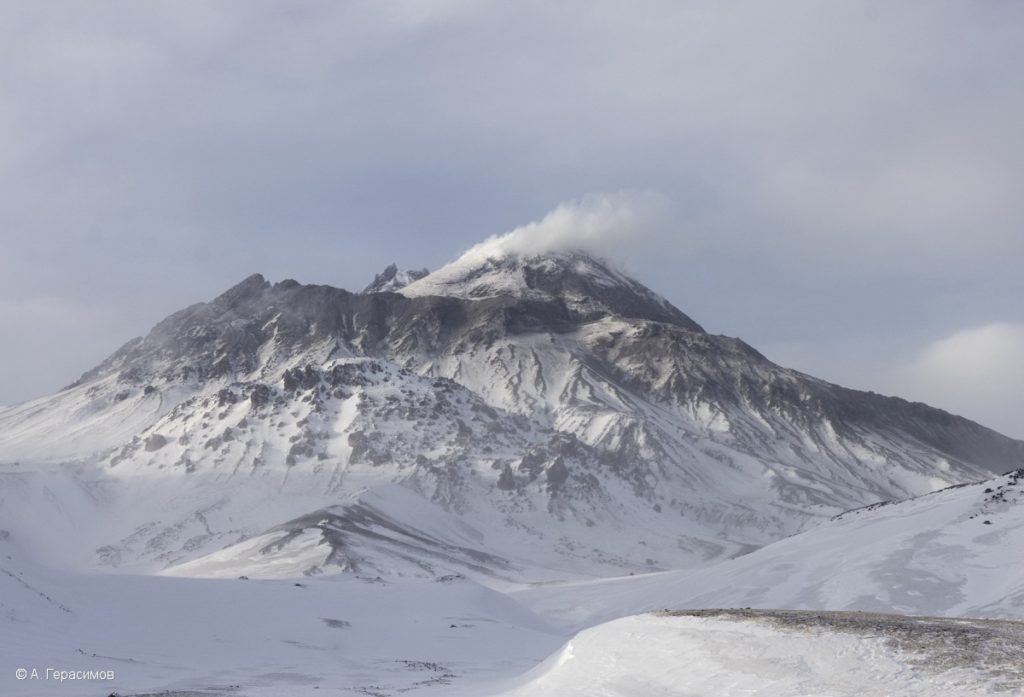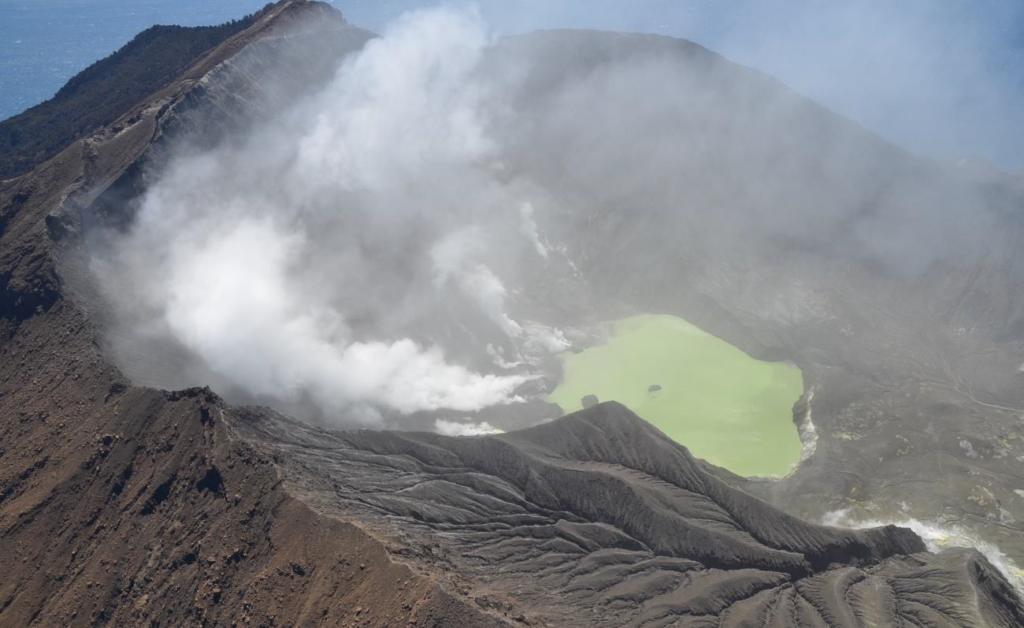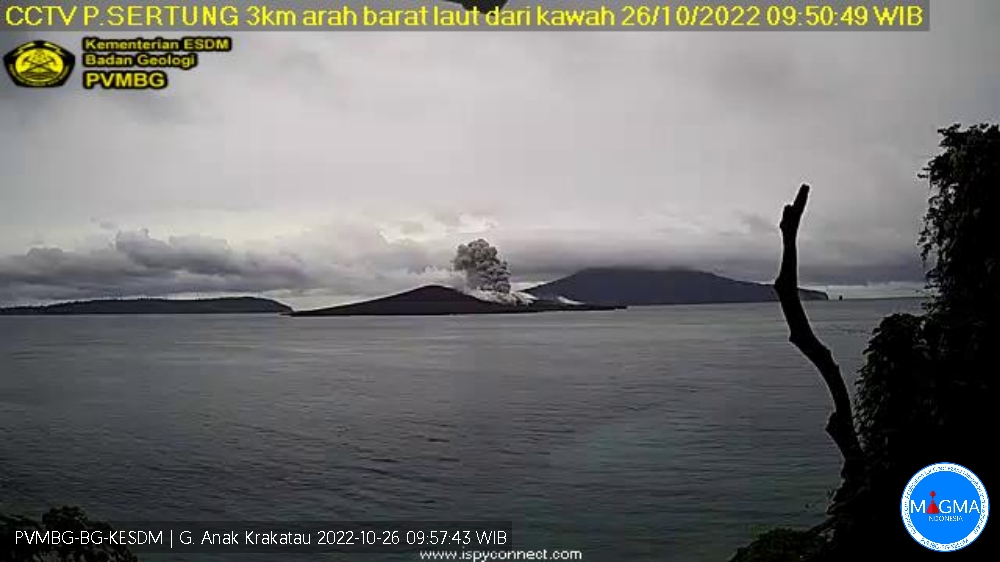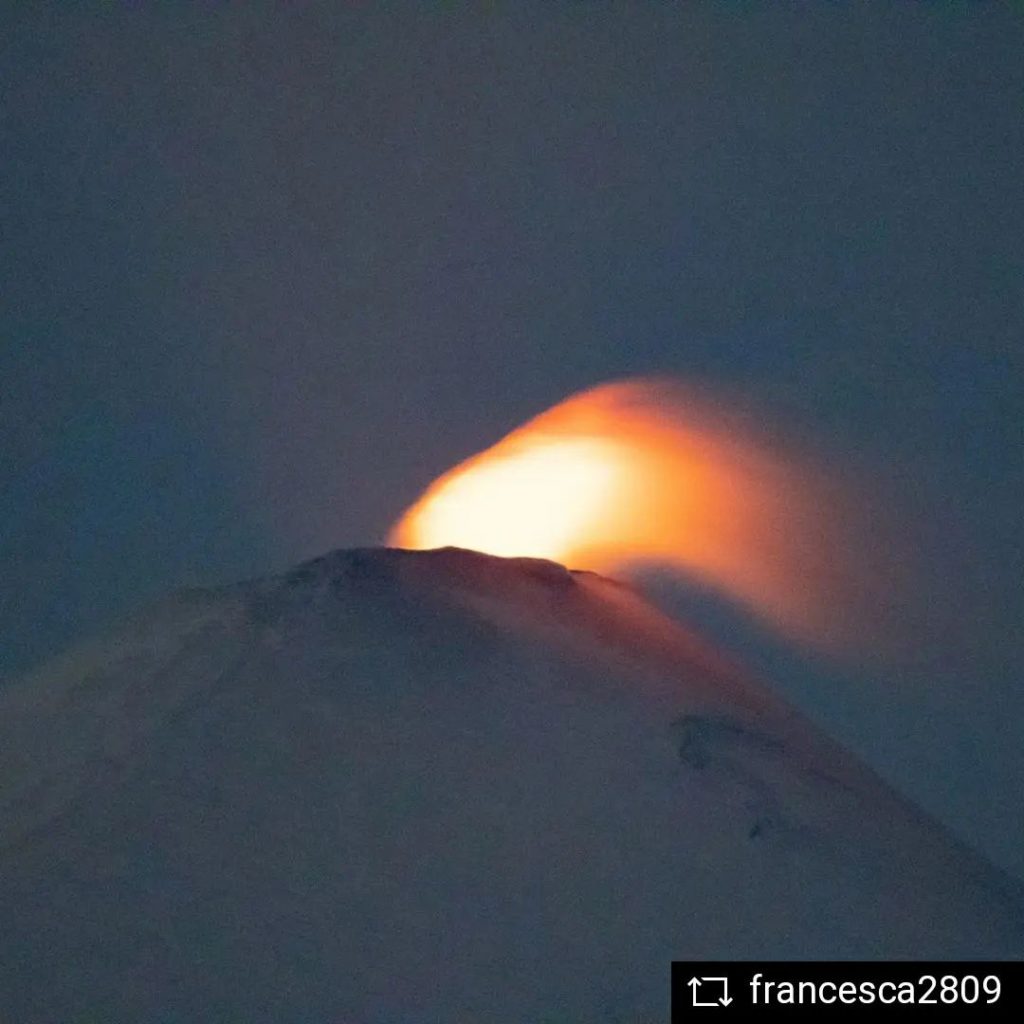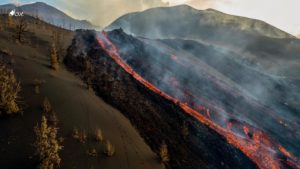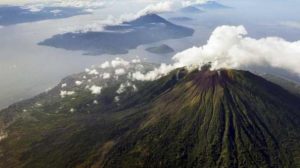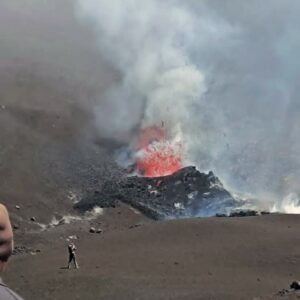October 26 , 2022.
Italy , Stromboli :
WEEKLY BULLETIN, from October 17, 2022 to October 23, 2022. (issue date October 25, 2022)
ACTIVITY BULLETIN SUMMARY
In the light of the surveillance data, it is highlighted:
1) VOLCANOLOGICAL OBSERVATIONS: During this period normal explosive activity of the Strombolian type was observed with projection activity in the area of the N crater. The total hourly frequency was low (less than 5 events/h) while the intensity of the explosions were medium-low in the North crater area and medium-high in the Center-South crater area.
2) SEISMOLOGY: The seismological parameters do not show significant variations.
3) GROUND DEFORMATIONS: There are no significant variations in the time series of the tilt and GNSS stations
4) GEOCHEMISTRY: SO2 flux at an average level
CO2 fluxes in the crater area are at medium to high values.
The C/S ratio in the plume is at medium-high values (C/S = 12.35).
There are no updates on the isotope ratio of helium in groundwater.
5) SATELLITE OBSERVATIONS: The thermal activity observed by satellite in the summit area was weak.
VOLCANOLOGICAL OBSERVATIONS
In the period under observation, the eruptive activity of Stromboli was characterized by the analysis of the images recorded by the surveillance cameras of the INGV-OE at an altitude of 190 m (SCT-SCV) which were restored on 21 September 2022 and Punta dei Corvi, while the other cameras at altitude 400 m and Pizzo due to problems acquiring video signals caused by damage to the optical fiber connecting Punta Labronzo and COA due to bad weather that has hit the island on August 12, 2022, are currently unavailable. The explosive activity was mainly produced by 3 (three) eruptive vents located in the North zone of the crater and by a vent in the Center-South zone. All the mouths are located inside the depression which occupies the terrace of the crater.
Overview of October 18.
On the morning of October 18, personnel from the I.N.G.V. –O.E. from Catania made an aerial flight over Stromboli using the helicopter made available by the 2nd Coast Guard Squadron. The cloud cover did not allow a distinct and total view of the crater terrace and the lava field along the Sciara, but from the thermal images it was possible to identify the two sectors of the crater (N1 and N2) and lava flows along the Sciara which manifests in cooling while the thermal anomalies present (bright parts of the flow) are related to areas of accumulation and changes in slope.
Observations of explosive activity captured by surveillance cameras:
Sector N1 located in the area of the North crater produced explosions of low intensity (less than 80 m high) to medium (less than 150 m high) emitting coarse materials (bombs and lapilli) mixed with fine materials ( ashes). Sector N2, with two emission points, shows low-intensity explosive activity emitting coarse materials and intense projection activity on October 21 and 22. The average frequency of explosions varied from less than 1 to 4 events/h.
In the Center-South zone, it was not possible to discriminate between the different sectors due to the close framing of the cameras at an altitude of 190 m towards the Center-South crater zone. In this crater area during the observation period, explosive activity of medium to high intensity (the products of many explosions exceeded 150 m in height) emitting fine materials mixed with coarse materials was highlighted . The average frequency of explosions was very low (between absent and 1 event/h)
Source : INGV.
Photos : INGV , Sebastiano Cannavo / Stromboli Stati d’animo .
Kamchatka , Bezymianny :
VOLCANO OBSERVATORY NOTICE FOR AVIATION (VONA)
Issued: October 25 , 2022
Volcano: Bezymianny (CAVW #300250)
Current aviation colour code: YELLOW
Previous aviation colour code: orange
Source: KVERT
Notice Number: 2022-147
Volcano Location: N 55 deg 58 min E 160 deg 35 min
Area: Kamchatka, Russia
Summit Elevation: 2882 m (9452.96 ft)
Volcanic Activity Summary:
The strong explosive eruption of the volcano finished. Satellite data by KVERT showed an ash plume and later a long ash cloud moved for 1915 km to the northeast of the volcano on 23-24 October. The extrusive-effusive eruption of the volcano continues, a strong fumarole activity, an incandescence of the lava dome at night, and hot avalanches accompanies this process. Satellite data showed a bright thermal anomaly over the volcano. KVERT continues to monitor Bezymianny volcano.
The extrusive-effusive eruption of the volcano continues. Ongoing activity could affect low-flying aircraft.
Volcanic cloud height:
NO ASH CLOUD PRODUSED
Other volcanic cloud information:
NO ASH CLOUD PRODUSED
Remarks:
Bezymianny volcano is the most active volcano of the world. In 1955, for the first time in history, Bezymianny started to erupt and after six months it produced a catastrophic eruption with the total volume of eruptive products over 3 km3. The lava dome began to grow in the explosive crater immediately after the catastrophe and continues at now.
Source : Kvert.
Photo : A. Gerasimov.
New Zealand , White Island :
An observation flight confirms the active vents are continuing to emit a moderate steam and gas plume. Rare periods of ash emission were noted during clear weather over the last 2 weeks. The Volcanic Alert Level remains at 2.
On 19 October 2022, GNS Science volcanologists observed a moderate gas and steam plume emitting from several sources behind the crater lake during a routine observation flight. The temperature of the gas and steam plume was measured at 145 ºC, down slightly from 165 ºC on October 5.
A gas observation flight on 7 October measured a low discharge rate of sulphur dioxide (SO2) of 217 ± 19 tonnes/day.
View of the active vent area producing moderate steam and gas emission, October 19. Minor grey coloured ash deposit is visible on the inner crater walls.
Minor, passive ash emissions are still occurring intermittently from an active vent and have been observed occasionally in satellite imagery. Deposits from minor ash emissions are confined to the inner crater walls. Our North Rim web camera remains obscured by a thin ash coating.
The VAL remains at Level 2 (moderate to heightened unrest) and the Aviation Colour Code remains at Yellow, acknowledging the current level of activity, but also continuing to acknowledge the greater level of uncertainty in our interpretation due to the current lack of consistent, useful real-time data.
As the weather allows, we have increased the frequency of our gas and observation flights to the island until we can service our on-island equipment and power supplies. We still have intermittent access to webcams images from the island, providing some level of visual monitoring between our flights.
The Volcanic Alert Level reflects the current level of volcanic unrest or activity and is not a forecast of future activity. While Volcanic Alert Level 2 is mostly associated with volcanic unrest hazards (including discharge of steam and hot volcanic gases, earthquakes, landslides, and hydrothermal activity), potential for eruption hazards also exists and eruptions can still occur with little or no warning.
Source et photo : Geonet / Craig Miller / Duty Volcanologist
Indonesia , Anak Krakatau :
Mount Anak Krakatau erupted on Wednesday, October 26, 2022 at 09:49 WIB with an ash column height observed at ± 300 m above the summit (± 457 m above sea level). It is observed that the ash column is gray in color with a thick intensity towards the northeast. This eruption was recorded on a seismograph with a maximum amplitude of 40 mm and a duration of 33 seconds.
VOLCANO OBSERVATORY NOTICE FOR AVIATION – VONA
Issued : October 26 , 2022
Volcano : Anak Krakatau (262000)
Current Aviation Colour Code : ORANGE
Previous Aviation Colour Code : orange
Source : Anak Krakatau Volcano Observatory
Notice Number : 2022KRA80
Volcano Location : S 06 deg 06 min 07 sec E 105 deg 25 min 23 sec
Area : Lampung, Indonesia
Summit Elevation : 502 FT (157 M)
Volcanic Activity Summary :
Eruption with ash clouds at 02:49 UTC (09:49 local time). The eruption lasted for 33 seconds.
Volcanic Cloud Height :
Best estimate of ash-cloud top is around 1462 FT (457 M) above sea level, may be higher than what can be observed clearly. Source of height data: ground observer.
Other Volcanic Cloud Information :
Visuals directly from the cctv were observed eruptions with the color of the gray eruption smoke 300m from the top of the volcano, the wind direction slowly to the North East.
Remarks :
Eruption recorded on seismogram with maximum amplitude 40 mm and maximum duration 33 second.
Source : Magma Indonésie .
Chile , Villarica :
Special Report on Volcanic Activity (REAV), La Araucanía and Los Ríos regions, Villarrica volcano, October 25, 2022, 3:40 p.m. local time (mainland Chile).
The National Geology and Mining Service of Chile (Sernageomin) announces the following PRELIMINARY information, obtained through the monitoring equipment of the National Volcanic Monitoring Network (RNVV), processed and analyzed at the Volcanological Observatory of the Andes del Sud ( Ovdas):
Seismology:
During the month, there was a gradual increase in seismic activity at the Villarrica volcano, evidenced by a greater number of long-period (LP) type events, associated with fluid dynamics within the system. volcanic) and an increase in their amplitudes. During the past week, between 200 and 500 LP events per day have been recorded, with earthquakes that exhibited reduced displacement (DR) values of less than 10 cm2, with the maximum DR value equal to 27 cm2.
Regarding the continuous tremor signal, a slight increase was recorded compared to previous months, reaching RSAM values between 0.4 and 0.8 um/s. This tremor signal had dominant frequencies mainly between 1.0 and 1.3 Hz and a second group of dominant frequencies between 1.6 and 1.9 Hz.
Fluid Geochemistry
Data on sulfur dioxide (SO2) emissions obtained by Differential Absorption Optical Spectroscopy (DOAS) equipment, corresponding to the Los Nevados and Tralco stations, installed respectively 10 km East-North-East (ENE) and 6 km East-South-East (ESE) of the active crater, presented an average value of 535 ± 115 t / d, with a maximum daily value of 1,273 t / d on October 13. According to the activity of the volcano, these values are within the levels considered normal. A decrease is observed compared to the previous period.
Surveillance cameras
From surveillance cameras, point emissions of wind-dispersed pyroclasts were recorded on October 2 and 23. However, persistent outgassing was observed
recurring during the month of October generating columns 460 m high above the level of the crater. In turn, an increase in the frequency and height of incandescent activity observed through surveillance cameras is detected, which is consistent with external reports (P.O.V.I and other collaborators) on the possible generation of spatter and of small-scale Strombolian activity.
Geomorphological analysis
According to the processing of SkySat, Planet Scope Orthotile and Sentinel 2-L2A satellite images, the exposed lava lake is detected in a 36 m2 area in the eastern sector of the volcano’s crater on October 14, 2022 and the morphological variations they suggest the partial collapse (less than 300 m2 of surface) of one of the levels of the inner South-South-West edge of the crater. Regarding thermal radiation anomalies, a maximum peak of 7200 m2 of surface stands out on October 14, located inside the crater and a gradual increase in its occurrence and distribution from February 2021 to date.
The recorded activity is associated with a process of surfacing of the lava lake, which in its migration can lead to pulsatile increases in surface activity, which is consistent with an increase in energy and seismicity recording of the LP type, the visualization of incandescence phenomena and the generation of pyroclastic emissions. In the current context, it is very likely that Strombolian activity will be recorded, generating ballistic emissions and ash dispersion in the area near the crater. The technical alert remains at the green level.
Source : Sernageomin.
Photos : Francesca2809 , Richard L.

